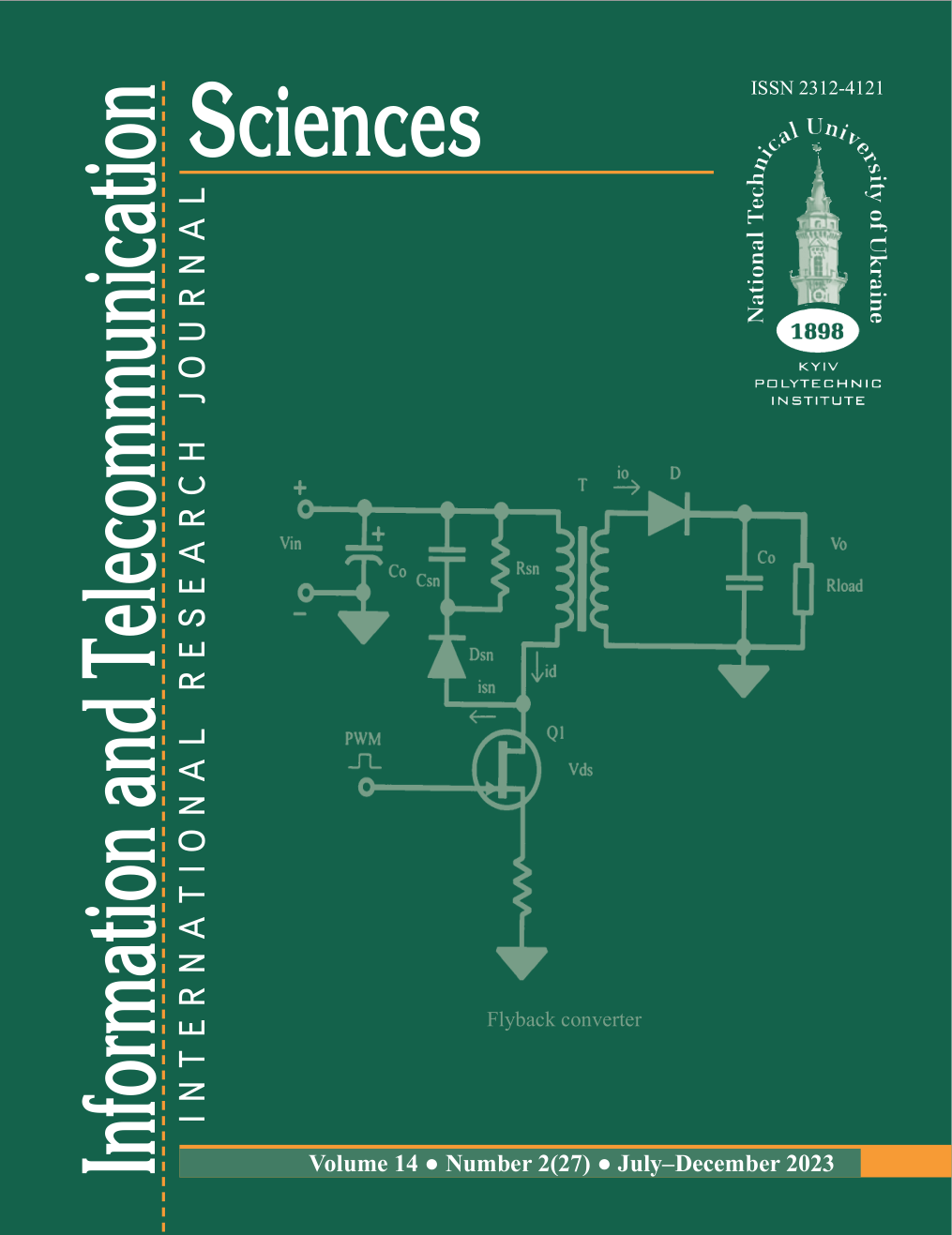POSSIBILITIES OF IMPROVING THE VOICE SERVICES QUALITY IN 5G NETWORKS
DOI:
https://doi.org/10.20535/2411-2976.22023.9-16Keywords:
5G, Voice service, QoS, VoLTE, CSCF, EPS FB, NSA, Delay, VoNR, 5QI, RAN, RRC, Codec, EVSAbstract
Background. The introduction of fifth-generation (5G) networks creates new opportunities for fast and continuous data exchange, but there are still some problems with the quality of voice services in such networks. With the rapid development of technology and the further spread of 5G, there is a need to understand the impact of key aspects of 5G on voice quality. This requires research that can systematically analyse the features of 5G networks that affect the quality of voice services.
Objective. Identification of ways to improve the quality of voice services in 5G networks. Assessment of key indicators of voice service quality in 5G networks. Determination of the best option for the gradual transition to the Standalone mode and the use of VoNR technology in the fifth generation networks.
Methods. Analysis of factors affecting the quality of voice services in fifth-generation networks. Analysis of well-known publications on the implementation of 5G networks. Comparison of the implementation of Non-Standalone and Standalone modes in the 5G network. Testing of the modern EVS codec, which provides an opportunity to improve the customer experience.
Results. Confirmation that 5G networks can significantly improve the quality of voice services compared to previous mobile communication technologies such as 4G and 3G. Certain factors that may affect the quality of voice services and require additional attention when planning and deploying 5G networks are identified. The optimal steps for the transition to the Standalone mode and the use of VoNR technology in fifth-generation networks are determined. The main differences in the QoS architecture between LTE and 5G are identified, and the purpose of DRB flows for separating traffic types and services is established.
Conclusions. It has been confirmed that 5G networks can significantly improve the quality of voice services compared to previous technologies such as 4G and 3G. This is possible due to the broadband capabilities of 5G networks, improved data transmission, low latency, the use of an advanced EVS codec and reduced response time. However, certain factors, such as network coverage, optimisation level and traffic characteristics, can affect the quality of voice services and require additional attention when planning and deploying 5G networks. The QoS management architecture consists of QoS flows, which allow separating packet assignment to flows (managed by the CN) from the assignment of DRB flows (managed by the RAN). As 5G networks are being rolled out gradually, it is important to properly integrate the 5G domain into the existing telecoms provider's network. The transition from Non-Standalone to Dual connectivity is a necessary step for the implementation of VoNR technology in Standalone mode. Using the modern EVS codec allows not only improving the customer experience, but also introducing new voice services.
References
S. O. Kravchuk, Theory of mobile information communication systems. System architecture [Electronic resource] / S. O. Kravchuk. – Electronic text data (1 file: 18.17 MB). – Kyiv: Igor Sikorsky KPI, 2023. – 683 р. Retrieved from https://ela.kpi.ua/handle/123456789/53198
I. Vetoshko, S. Kravchuk, “Deployment of voice services in 5G networks”. Grail of Science 02.2023 Retrieved from https://doi.org/10.36074/grail-of-science.17.02.2023.051
I. Vetoshko, V. Noskov, “Evaluation of Voice Transmission Quality in the LTE Networks”. Information and Telecommunication Sciences 12 2021 Retrieved from https://doi.org/10.20535/2411-2976.22021.22-26.
V. Kovalenko, “Why Voice Testing Is Crucial for the Quality of Global Communications”, November 04, (2022) // Retrieved from https://www.infopulse.com/blog/voice-testing-quality-global-communications
J. Amandeep, D. Kumar, “Investigating Resource Allocation Techniques and Key Performance Indicators (KPIs) for 5G New Radio Networks”, A Review International Journal of Computer Networks and Applications (IJCNA) DOI: 10.22247/ijcna/2023/221899 Volume 10, Issue 3, May – June (2023) pp. 422-442 (2023).
3GPP TS 38.300; 5G; NR; NR and NG-RAN Overall description; Stage2, V17.0.0 2022. ETSI: Sophia Antipolis, France, 2022.
M. Ilchenko, S. Kravchuk, MOBILE INFOCOMMUNICATION SYSTEMS, Information and Telecommunication Sciences, Vol. 11, Number 1, рр. 11-19 (2020), (DOI: https://doi.org/10.20535/2411-2976.12020.11-19)
3GPP TS 22.228; Service Requirements for the Internet Protocol (IP) Multimedia Core Network Subsystem (IMS), V17.0.0. ETSI: Sophia Antipolis, France, 2022.
5G System Design Architectural and Functional Considerations and Long Term Research, Edited by P. Marsch, Ö. Bulakçi, O. Queseth, M. Boldi. – Wiley, 2018. – 580 (ISBN: 9781119425120).
Cisco Annual Internet Report (2018–2023) White Paper – Retrieved from https://www.cisco.com/c/en/us/solutions/collateral/executive-perspectives/annual-internet-report/white-paper-c11-741490.html
Rogers Activates One of North America’s First Standalone 5G Networks, January 2021 – Retrieved from https://insidetowers.com/cell-tower-news-rogers-activates-one-of-north-americas-first-standalone-5g-networks/
Ahmadi S. 5G NR: Architecture, Technology, Implementation, and Operation of 3GPP New Radio Standards. - London: Academic Press, 2019. – 1020 р.
5G SA Networks are Going Global, Ready to Become Mainstream. GSMA. Retrieved from https://data.gsmaintelligence.com/research (accessed on 1 July 2022)
3GPP TS 38.201; NR; Physical layer; General description, V18.2.0 2018. ETSI: Sophia Antipolis, France, 2018.


